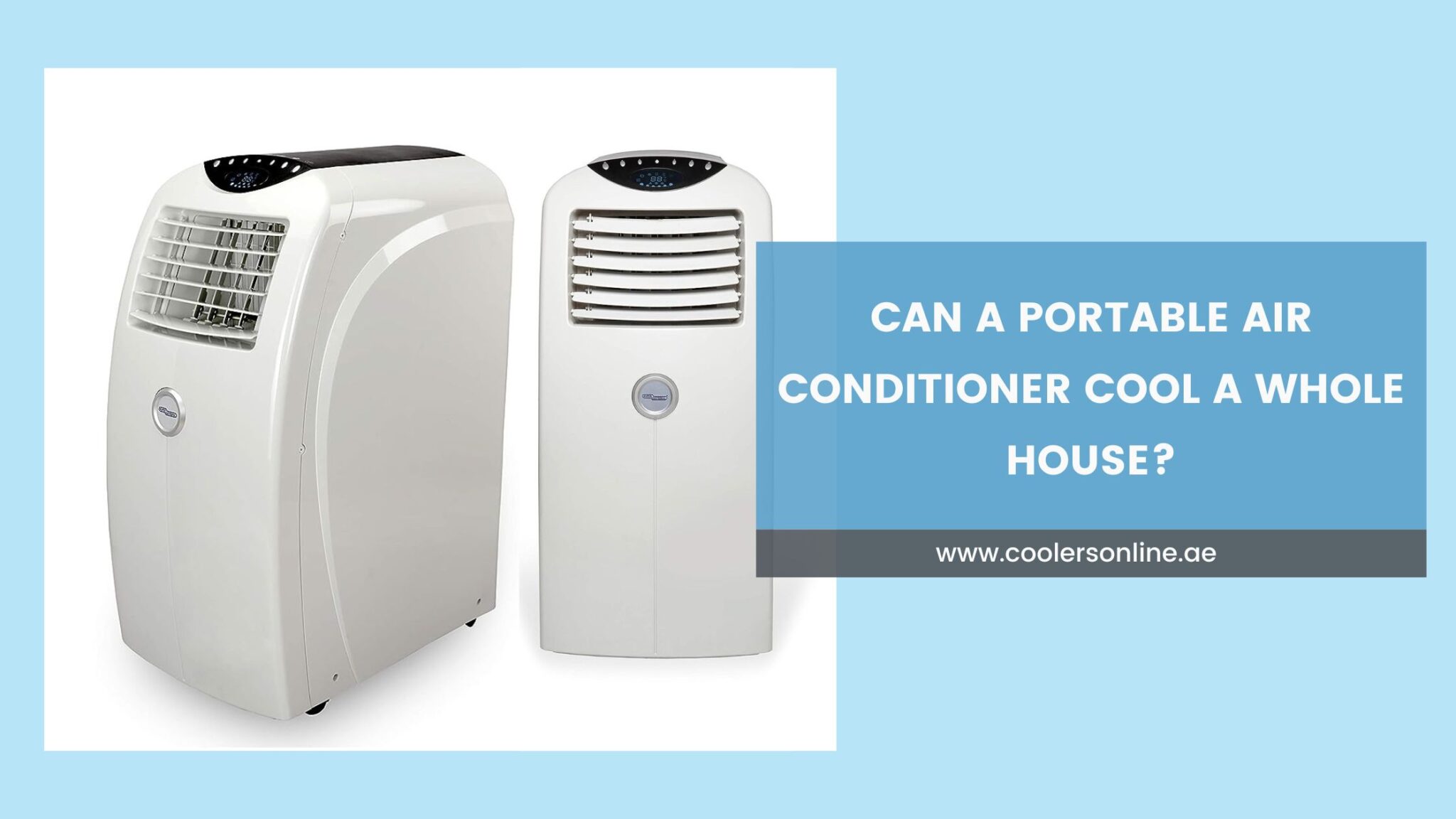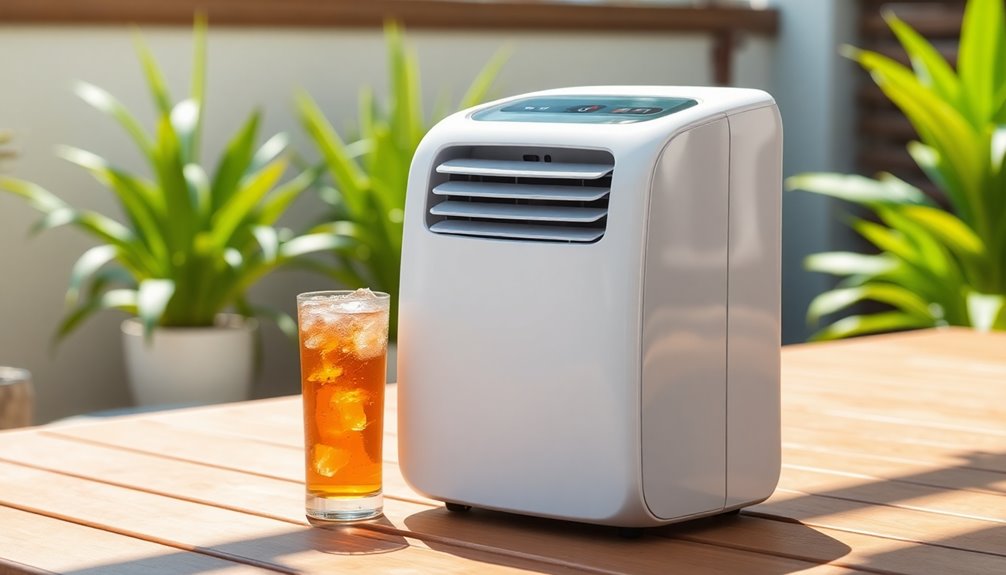Portable Air Conditioner For Whole House

Portable air conditioners, even the larger models marketed as "whole house" solutions, can sometimes fail to deliver the cool comfort you expect. One common scenario is the unit starts but blows only warm air, or doesn't start at all. This article provides a step-by-step guide to help you troubleshoot common issues before calling a professional. Remember, safety is paramount. If you are uncomfortable with any of these steps, or if the problem involves electrical wiring, gas lines, or complex components, stop immediately and contact a qualified technician.
Initial Assessment: Power and Basic Checks
Before diving into more complex troubleshooting, let's start with the basics:
1. Power Supply Verification
This seems obvious, but it's often the culprit. Ensure the air conditioner is properly plugged into a working outlet.
- Check the Outlet: Plug another device into the same outlet to verify it's providing power. If the other device doesn't work, the issue is with the outlet itself, not the AC unit. Check your circuit breaker or fuse box. A tripped breaker is a common cause.
- Extension Cord Considerations: Avoid using extension cords if possible. If you must use one, ensure it's a heavy-duty cord rated for the amperage of the air conditioner. Undersized extension cords can cause voltage drops and overheating, damaging the unit and posing a fire hazard.
- Power Cord Inspection: Visually inspect the air conditioner's power cord for any signs of damage, such as cuts, frays, or exposed wires. Do not use the unit if the cord is damaged. Replace the cord or consult a professional.
2. Control Panel and Settings
Sometimes, the problem isn't a mechanical failure, but a simple misconfiguration.
- Check the Mode: Make sure the air conditioner is set to "Cool" mode, not "Fan" or "Heat" (if available).
- Set the Temperature: Verify the desired temperature is set significantly lower than the current room temperature. If the set temperature is close to the ambient temperature, the unit may not activate the cooling function.
- Fan Speed: Ensure the fan speed is set to a reasonable level. A low fan speed might not circulate air effectively, making it seem like the unit isn't cooling properly.
- Timer Function: Check if the timer function is activated. The unit might be set to turn off automatically after a certain period. Deactivate the timer and see if the unit operates normally.
- Reset the Unit: Many portable air conditioners have a reset button. Look for a small button, often recessed, near the control panel or on the back of the unit. Use a pen or paperclip to gently press and hold the reset button for a few seconds. This can sometimes resolve minor software glitches.
Troubleshooting Cooling Issues
If the air conditioner is receiving power and the settings are correct, but it's still not cooling effectively, proceed with these checks:
3. Air Filter Inspection and Cleaning
A dirty air filter is a common cause of poor cooling performance. A clogged filter restricts airflow, forcing the unit to work harder and reducing its cooling capacity.
- Locate the Filter: The air filter is typically located on the back or side of the unit, often behind a removable panel. Refer to your owner's manual for the exact location.
- Remove and Inspect: Carefully remove the air filter and inspect it for dust, dirt, and debris.
- Clean the Filter:
- Washable Filters: Washable filters can be cleaned with warm water and mild soap. Rinse thoroughly and allow the filter to air dry completely before reinstalling it. Never reinstall a damp filter.
- Disposable Filters: Disposable filters should be replaced with a new filter of the same size and type.
- Regular Maintenance: Clean or replace the air filter every two to four weeks, or more frequently if you live in a dusty environment.
4. Exhaust Hose Installation and Obstructions
Portable air conditioners vent hot air outside through an exhaust hose. Proper installation and a clear exhaust path are crucial for efficient cooling.
- Hose Length and Straightness: The exhaust hose should be as short and straight as possible. Avoid excessive bends or kinks, as they restrict airflow.
- Window Kit Seal: Ensure the window kit is properly installed and sealed to prevent hot air from leaking back into the room. Use weather stripping or foam to seal any gaps around the window kit.
- Hose Connection: Verify the exhaust hose is securely connected to both the air conditioner and the window kit. Loose connections can allow hot air to escape back into the room.
- Obstructions: Check for any obstructions in the exhaust hose, such as lint, dust, or debris. Disconnect the hose and inspect it thoroughly. Use a vacuum cleaner or brush to remove any obstructions.
5. Condensate Drainage
Portable air conditioners remove moisture from the air, which collects as condensate. Some units have a self-evaporating system, while others require manual drainage.
- Self-Evaporating Systems: If your unit has a self-evaporating system, ensure the humidity level in the room is not excessively high. Extremely high humidity can overwhelm the system's capacity, leading to water buildup.
- Manual Drainage: If your unit requires manual drainage, locate the drain plug or hose (refer to your owner's manual). Place a container under the drain and remove the plug to allow the water to drain. Ensure the container is large enough to hold all the condensate. Failing to drain the unit regularly can cause it to shut down or malfunction.
- Drainage Issues: If the unit is not draining properly, check for any clogs in the drain hose or drain opening. Use a small wire or pipe cleaner to clear any obstructions.
When to Call a Professional
The following issues require the attention of a qualified HVAC technician. Do not attempt to repair these yourself.
6. Refrigerant Leaks
Refrigerant is the fluid that cools the air. If the air conditioner is blowing warm air despite all other components functioning correctly, it may have a refrigerant leak.
- Signs of a Leak:
- Consistently blowing warm air.
- Hissing sound coming from the unit.
- Ice buildup on the coils (though this can also be caused by other issues).
- Why It's a Professional Job: Refrigerant handling requires specialized equipment and training. Improper handling can be dangerous and harmful to the environment. Moreover, fixing a refrigerant leak requires locating the source of the leak and sealing it, which often involves brazing or welding.
7. Compressor Problems
The compressor is the heart of the air conditioning system. It circulates the refrigerant and pressurizes it to facilitate the cooling process. A faulty compressor can prevent the unit from cooling at all.
- Signs of a Compressor Problem:
- The unit makes unusual noises, such as rattling, clicking, or humming.
- The unit cycles on and off frequently (short cycling).
- The unit doesn't cool at all, even though the fan is running.
- Why It's a Professional Job: Compressor replacement is a complex and expensive repair. It requires specialized tools, knowledge of refrigeration systems, and proper handling of refrigerant.
8. Electrical Issues
Any electrical problems beyond checking the power cord and outlet should be handled by a qualified electrician.
- Examples of Electrical Issues:
- Burning smell coming from the unit.
- Sparks or smoke.
- Repeatedly tripping the circuit breaker.
- Loose or damaged wiring inside the unit.
- Why It's a Professional Job: Working with electricity can be extremely dangerous. Incorrect repairs can lead to electric shock, fire, or further damage to the unit.
9. Complex Component Failures
If you suspect a problem with a complex component, such as the fan motor, control board, or sensors, it's best to consult a professional.
- Why It's a Professional Job: Diagnosing and repairing these issues requires specialized knowledge, tools, and testing equipment. Attempting to repair these components yourself could void the warranty or cause further damage.
Preventative Maintenance Tips
Regular maintenance can help prevent many of the problems discussed above and extend the life of your portable air conditioner.
- Clean the Air Filter Regularly: As mentioned earlier, clean or replace the air filter every two to four weeks.
- Inspect the Exhaust Hose: Check the exhaust hose regularly for kinks, obstructions, and damage.
- Clean the Exterior: Wipe down the exterior of the unit with a damp cloth to remove dust and dirt.
- Winter Storage: When storing the air conditioner for the winter, clean it thoroughly, drain any remaining water, and store it in a cool, dry place. Cover the unit to protect it from dust and debris.
Final Thoughts
Troubleshooting a portable air conditioner can be a straightforward process if you follow a systematic approach. By starting with the basics and working your way through the more complex issues, you may be able to identify and resolve the problem yourself. However, always prioritize safety. If you are unsure about any step, or if the problem involves electricity, gas, or complex components, contact a qualified technician for assistance. With proper care and maintenance, your portable air conditioner can provide years of reliable cooling comfort.


:max_bytes(150000):strip_icc()/spr-portable-air-conditioners-may-24-test-lg-appliances-home-comfort-10000-btu-wi-fi-connected-joe-morales-20-e59c6bad44644d82bf96c0afd0cf973f.jpeg)




:max_bytes(150000):strip_icc()/bhg-portable-air-conditioners-may-24-test-black-decker-diana-weesner-09-b9596e0b432548d99cb43d6988659be3.jpeg)


